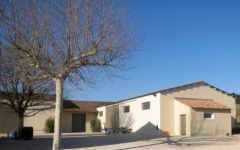Le Vieux Donjon Chateauneuf-du-Pape (375ML half-bottle) 2013


Product Details
Your Rating
Somm Note
Winemaker Notes
Other Vintages
2021-
James
Suckling -
Robert
Parker -
Jeb
Dunnuck
-
Jeb
Dunnuck -
James
Suckling -
Wine
Spectator -
Robert
Parker
-
Jeb
Dunnuck - Decanter
-
Wine
Spectator -
Robert
Parker
-
Robert
Parker -
Jeb
Dunnuck -
Wine
Spectator
-
Jeb
Dunnuck -
Robert
Parker -
Wine
Spectator
-
Jeb
Dunnuck -
Robert
Parker -
Wine
Spectator - Decanter
-
Wine
Spectator -
Robert
Parker -
Jeb
Dunnuck
-
Wine &
Spirits -
Robert
Parker -
Wine
Spectator
-
Robert
Parker -
Wine &
Spirits
-
Robert
Parker -
Wine
Spectator
-
Wine
Spectator -
Robert
Parker - Decanter
-
Robert
Parker -
Wine
Spectator
-
Wine
Spectator -
Robert
Parker
-
Robert
Parker
-
Wine
Spectator -
Robert
Parker
-
Wine
Spectator -
Robert
Parker
-
Wine
Spectator -
Robert
Parker
-
Robert
Parker
-
Robert
Parker
-
Wine
Spectator -
Robert
Parker -
Wine
Enthusiast
-
Wine
Spectator


Le Vieux Donjon, as it exists today, was created in 1979 with the marriage of Lucien and Marie José Michel. Both Lucien and Marie José's parents owned vineyards in the region, and those holding were combined to form Le Vieux Donjon. The domaine covers fourteen hectares of vineyards (all farmed organically), thirteen planted to red grapes and one planted to white. The Michel's holdings are primarily in the North and Northwest of the AOC, but they also have small plots in the Southwest and East. Their most important parcel is Pialons, and the grapes from the 2008 come from that parcel as well as those in Cabrieres, Bois de Boursan, Les Marines and Le Mourre de Gaude. The soils are mainly limestone and clay, and are studded with the famed galets roulé, the round, rust-colored stones which were left behind after the retreat of the Alpine glaciers which once covered the region.
Since 2008 Claire Fabre has been the winemaker at Le Vieux Donjon. She is the third generation of the Michel family which was founded by the father of Lucien Michel, Marcel Michel, who did the first bottling at his domain in 1966. Since 1979 Marie José and Lucien Michel have run the property. Claire is married to another winegrower, Adrien Fabre of Domaine la Florane in Visan. In 2013 Claire's brother François joined her at the domain, and the two of them became officially responsible for the property together with their mother Marie Michel.
With bold fruit flavors and accents of sweet spice, Grenache, Syrah and Mourvèdre form the base of the classic Rhône Red Blend, while Carignan, Cinsault and Counoise often come in to play. Though they originated from France’s southern Rhône Valley, with some creative interpretation, Rhône blends have also become popular in other countries. Somm Secret—Putting their own local spin on the Rhône Red Blend, those from Priorat often include Merlot and Cabernet Sauvignon. In California, it is not uncommon to see Petite Sirah make an appearance.

Famous for its full-bodied, seductive and spicy reds with flavor and aroma characteristics reminiscent of black cherry, baked raspberry, garrigue, olive tapenade, lavender and baking spice, Châteauneuf-du-Pape is the leading sub-appellation of the southern Rhône River Valley. Large pebbles resembling river rocks, called "galets" in French, dominate most of the terrain. The stones hold heat and reflect it back up to the low-lying gobelet-trained vines. Though the galets are typical, they are not prominent in every vineyard. Chateau Rayas is the most obvious deviation with very sandy soil.
According to law, eighteen grape varieties are allowed in Châteauneuf-du-Pape and most wines are blends of some mix of these. For reds, Grenache is the star player with Mourvedre and Syrah coming typically second. Others used include Cinsault, Counoise and occasionally Muscardin, Vaccarèse, Picquepoul Noir and Terret Noir.
Only about 6-7% of wine from Châteauneuf-du-Pape is white wine. Blends and single-varietal bottlings are typically based on the soft and floral Grenache Blanc but Clairette, Bourboulenc and Roussanne are grown with some significance.
The wine of Chateauneuf-du-Pape takes its name from the relocation of the papal court to Avignon. The lore says that after moving in 1309, Pope Clément V (after whom Chateau Pape-Clément in Pessac-Léognan is named) ordered that vines were planted. But it was actually his successor, John XXII, who established the vineyards. The name however, Chateauneuf-du-Pape, translated as "the pope's new castle," didn’t really stick until the 19th century.
